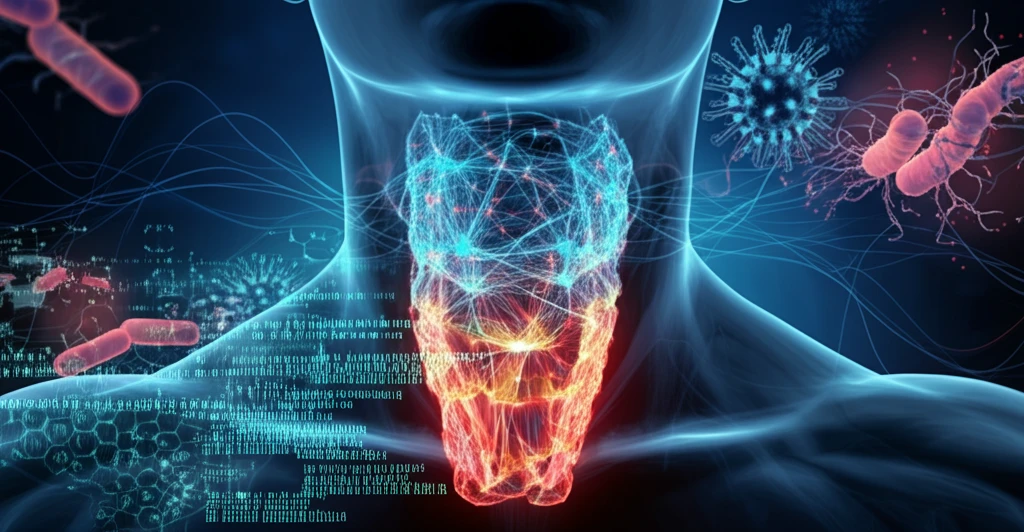
Sore Throat Savior: How Real-Time Data Can Help You Dodge Strep This Season
"Is it just a cold, or something more? Discover how cutting-edge biosurveillance can refine your strep throat risk assessment and keep you healthy."
That tickle in your throat... the slight fever... is it just a cold, or could it be strep throat? For years, doctors have relied on clinical judgment and basic scoring systems to make that call. But what if they had access to real-time data, showing exactly how much strep is circulating in your community right now? A groundbreaking study is revealing how this type of 'biosurveillance' can dramatically improve strep throat diagnosis, helping patients get the right treatment, right away.
Group A streptococcal (GAS) pharyngitis, or strep throat, is a common ailment, especially among school-aged children. While generally not dangerous, prompt diagnosis and treatment with antibiotics are crucial to prevent complications like rheumatic fever and reduce the spread of infection. However, diagnosing strep isn't always straightforward. Physical exams can be unreliable, leading to over-prescription of antibiotics for viral infections and under-treatment of actual strep cases. This is where the Centor score comes in.
The Centor score, a clinical prediction rule, assigns points based on factors like fever, tonsillar exudates, and swollen lymph nodes. While helpful, this score doesn't account for the current local incidence of strep throat. Imagine a scenario where strep is rampant in your area. A Centor score of 1 might warrant closer attention than usual. Conversely, during a low-incidence period, a higher score might still justify caution before prescribing antibiotics.
Real-Time Data to the Rescue: Improving Strep Diagnosis

The study, published in the Annals of Internal Medicine, explored the impact of integrating real-time biosurveillance data into strep throat diagnosis. Researchers analyzed data from over 82,000 patients presenting with pharyngitis at MinuteClinics across the United States. They compared the accuracy of the traditional Centor score with a 'biosurveillance-responsive score,' which adjusted the Centor score based on the recent local proportion positive (RLPP) for GAS pharyngitis.
- Reduced Missed Cases: When RLPP was high, managing patients with a Centor score of 1 as if it were a 2 significantly increased the identification of true strep cases.
- Sparing Antibiotics: Conversely, during low-incidence periods, decreasing the score of patients with Centor values of 3 could prevent unnecessary antibiotic prescriptions.
- Improved Accuracy: The biosurveillance-responsive approach led to a more precise classification of patients, reducing both false positives and false negatives.
- Data-Driven Decisions: Empowers clinicians with real-time data to make informed decisions.
The Future of Diagnostics: Personalized Epidemiology
This study highlights the potential of 'personalized epidemiology,' where real-time data about local disease outbreaks informs individual patient care. Imagine a future where your doctor has access to a dashboard showing the prevalence of various infections in your area, allowing for more precise diagnoses and treatment decisions. While real-time regional data on GAS pharyngitis isn't yet widely available, this research paves the way for incorporating biosurveillance into clinical guidelines for strep throat and other communicable diseases, ultimately leading to better health outcomes and more judicious use of antibiotics.
